Siemens EDA (Tessent Embedded Analytics)
A great team working on an exciting and innovative future for the world of chip design, a place to really stretch yourself and your engineering skills James Betson, UKESF Scholar 2021-2023
Our Scholarships
Placement Location
Cambridge or Bristol
Type of Placements Offered
• Summer placements • 12-month placements • 6-month MEng placements
Restrictions/Notes
2024/25 Scholarships
Multiple new scholarships
Who we are and what we do
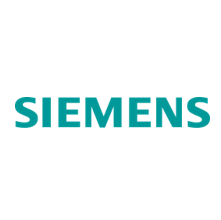
Siemens EDA (formerly Mentor Graphics) delivers the world’s most comprehensive portfolio of electronic design automation (EDA) software, hardware, and services, enabling our customers to deliver life-changing innovations faster and become market leaders.
During your placement, you’ll be working in our Tessent Embedded Analytics division, formerly known as the UK high-growth start-up UltraSoC which was acquired by Siemens in 2020. This will give scholars a rare experience of working on pioneering technology in a start-up environment whilst also being part of a large company.
Systems-on-chip (SoC) products are everywhere and have transformed the world around us. What happens when they go wrong, and is there any way we can intervene? For example, how can we detect faulty pixels in autonomous vehicle cameras, security issues in server farms, and performance issues in 5G equipment?
We have designed a portfolio of Embedded Analytics chip designs that our customers can include in their SoCs. These “modules” operate across the whole SoC, reporting rich information in real-time, non-intrusively, from hardware and software. As our modules are cross-compatible, it provides an efficient way to integrate IP (Intellectual Property) from different companies into one coherent framework including legacy solutions or in-house custom logic.
Our products allow engineers to look inside SoCs during the development process and understand exactly how they operate under real-life conditions. These capabilities also allow for monitoring after the SoC has been made, opening the door for a wide range of in-life analytics in industries including:
- Network infrastructure
- 5G telecoms
- Servers and High-Performance Computing (HPC)
- Automotive
- Safety-critical systems
- Internet of Things (IoT)
- Data centres
Connect with Siemens via LinkedIn.
What you could be doing during your work placement
During your placement you will be assigned a mentor and will be working on a variety of projects. These will all be “for real” and in many cases will be supporting specific customer deliverables. You will become an integral part of the team and take part in weekly all-hands meetings, team meetings, and regular 1-to-1 sessions with your mentor. You will also get to meet the Tessent leadership team and get exposure to day-to-day workings of a market-leading business. Being part of Siemens, you will also have the unique opportunity to experience working for a large international company with a diverse product portfolio.
Our UKESF interns have gained recognition during their placements, including multiple UKESF Scholar of the Year Awards, and multiple EW BrightSparks Awards.
In addition to work, you’ll be part of a team that arranges a wide variety of activities such as:
- Monthly lunches (in both Cambridge and Bristol)
- Regular get-togethers at our main site in Cambridge
- Sports groups including badminton and bouldering
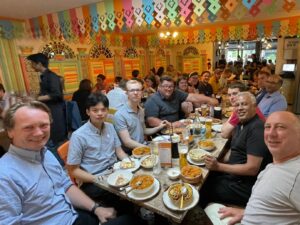
Our team is spread across the UK and Poland with offices in Cambridge, Bristol, and Warsaw. Applicants are free to choose between our two UK offices. Hybrid placements and a placement in Poland may be possible upon request.
We have five different teams that are all offering placements. Regardless of which team you would choose, you’ll be learning how to use:
- Git and GitLab for source control and continuous integration (CI)
- Jenkins for CI and automation
- A standard Linux environment for day-to-day work
- Advanced “make” methods to work with our custom Makefile system (either GNU make or cmake)
- Our custom hardware IP modules
Hardware Team
This team is split into two sub-teams that you’ll be working with: Design and Verification. Working in these sub-teams involve:
- Training in the use of industry leading Questa tools for:
- Simulation
- Linting
- Coverage Analysis
- Formal Verification
- Unreachability Analysis
- Working on SystemVerilog testbenches that make use of Universal Verification Methodology (UVM)
- Influencing design/verification methodology, flows, and best practices
- Learning what goes on in the team with regular “Show and Tells”, with opportunities to present one yourself!
Previous projects our UKESF scholars have achieved include:
- Analysing gate count and area, to work out the best parameters for a design
- Unit testing common IP blocks with SVUnit and SystemVerilog assertions
- Writing SystemVerilog coverage code to help verify our IP
- Using GNU Make to set up and evaluate new Questa tools
- Python scripts to improve our nightly regression testing system
Embedded Software Team
This team creates software libraries and applications which run on-chip, to extract data from hardware IP modules. You’ll get to learn how to:
- Write C code to meet the industry-standard MISRA certification
- Test C code to achieve almost 100% code coverage, using the CPPUnit test suite
- Use FPGAs to test embedded applications
- Develop automated tests for the software using the “Throw-the-Switch” Unity test suite (not to be confused with the game engine!)
Previous projects our UKESF scholars have achieved include:
- Developing a key feature which extracts hardware information from IP modules on-chip
- Creating a graphical visualisation of customer demos, both in the cloud and on FPGAs
- Proposing, designing, and implementing a revamp of a key software component
Host Software Team
This team works on developing software applications which extract data from hardware IP modules to a hosted machine or to the cloud. In this team you’ll use:
- The “latest and greatest” features of C++ to write software applications
- The GoogleTest unit testing suite for verifying your code
- GitLab runners for automated testing and continuous development flows
- Applications to interact with custom hardware IP modules
Previous projects our UKESF scholars have achieved include:
- Developing an application which generates bus traffic to verify software applications
- Creating a device simulator tool to help with testing and demonstration of a new product
Analytics Team
This team develops high-level software which analyses the data extracted from hardware IP modules. As part of this team, you’ll learn to:
- Write Python applications using Artificial Intelligence and Machine Learning methods for data analysis
- Analyse the data extracted from hardware IP modules, and how to interact with these modules
- Develop libraries in C/C++ for anomaly detection and post-processing of hardware IP modules’ measurements
- Use FPGAs to test embedded applications
Previous projects our UKESF scholars have achieved include:
- Evaluating the “perf” tool used to monitor application performance on Linux, and visualising this performance as a flame graph
- Porting analytics applications implemented in Python running on a laptop, into C/C++ applications running on FPGAs
- Preparing a presentation about automotive security standards and procedures
Technical Marketing Team
This team produces all the supporting material for our products and technologies, both existing and new. Within this team, you’ll have the opportunity to:
- Create and update marketing collateral, including website and social media posts, to support new product releases and enhancements
- Provide support at technical events by attending trade shows, which are a key part of starting our customers on their ‘buy journey’
- Create technical demonstrators, to help bring to life our technologies with simple yet effective demos
Previous projects our interns have achieved include:
- Developing new abuse cases as part of an existing automotive security demonstrator
- Writing an easy-to-use User Interface so that customers can interact with a demonstrator at trade shows
- Authoring research papers on key topics to help promote our technology within key industry bodies
Meet two of our Scholars
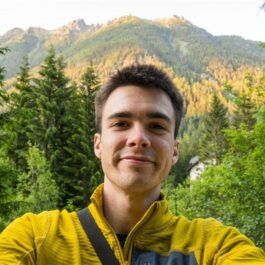
Name: James
University: University of Southampton
Degree Course: MEng Electronic Engineering
What appeals to you about Electronics?
For me, the appeal of electronics lies in its perfect blend of simplicity and complexity. What we perceive as powerful computers capable of anything can be boiled down to simple logic gates and transistors – which, on their own, are useless but can be brought together in innovative ways to make something great. Sometimes I find the most elegant solutions to problems require a lot of complicated electronics or ideas but will always start form combining elementary ideas into something bigger, often in ways you would never expect.
Why did you want a scholarship with Siemens EDA?
When choosing companies through the UKESF, I was looking to really get involved in something fun but also actually useful instead of doing a project just for the sake of it. Although Siemens is a huge conglomerate company, the hardware and software teams in Embedded Analytics are small and well-integrated, so I would be learning the real nuts and bolts of the whole development cycle from people who have more involvement of this on a day-to-day basis.
I also thought working in Embedded Analytics, and EDA in general, would provide a unique insight into my interests in SoC design. In helping to build some of their analytics solutions I could improve my skills as an engineer, but also learn about how customers are designing their chips, and what resources they are using to test them.
My interview was tough, but I got a really accommodating and welcoming feeling from the team members interviewing me. I could see myself working on projects with these people – and I haven’t regretted my decision to join since.
What type work have you been involved with during your placement?
My interests align with both low-level software and hardware, which fortunately Embedded Analytics both develop. I was interviewed by and spent my first summer internship in the software team. I was involved with enhancing the Hosted team’s testing infrastructure by building FPGA test environments in Docker and integrating this with their C++ code and GitLab. I then spend the last few weeks working on a new feature of ESDK, one of our software products, which was great fun.
Because I also wanted to dip my toes into hardware, I spent my next summer working with the hardware team – both on the RTL side and the verification side. I integrated a new verification tool into the team’s Make flow and helped refactor some testbenches in SystemVerilog, as well as upgrade some of the RTL to a new specification.
What are your interests outside of work?
In my spare time I like sailing and running, and I’m also a big fan of beer. I enjoy playing the piano and electric guitar with friends, or on stage and spend a lot of time listening to tunes from the best era for music, the 70s.
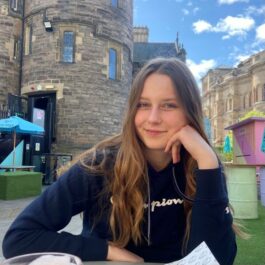
Name: Ola
Sponsor: Siemens EDA
University: University of Edinburgh
Degree Course: BEng Electrical and Mechanical Engineering
What appeals to you about Electronics?
Electronics always fascinated me as a way to bind primary nature laws into such complicated creations as computers, with intelligence almost equal to the human one. Adding to it the microscale of things happening and endless choices of how to perform one task, it’s a subject to which one can easily dedicate their career entirely.
Why did you want a scholarship with Siemens EDA?
The internship programme offered by Siemens created a possibility to look more in-depth at how the systems-on-chips are operating – the topic that interested me the most as processes on these small structures aren’t visible to the naked eye. I also appreciated a lot that the team from the beginning was eager to consider my field of interest, as well as future courses of studies at the university when it came to picking a topic for my projects. This way my work was useful in real-life applications, and I had a chance to learn what I wanted and needed. That atmosphere of mutual understanding combined with the possibility of developing both my hardware and software skills made Siemens a dream company to be in.
What type work have you been involved with during your placement?
I enjoyed my time during the internship both academically and personally. During my first project, I developed a Google test to check if the value from FPGA’s hardware registers is equal to the one programmed to be calculated by our code developed earlier. The task, being a common good practice in programming, gave me experience with working on complicated code in C and C++ as well as a deeper understanding of standard FPGA architecture and different protocols that Embedded Analytics modules on the chips are using. The next project involved writing an investigation into Linux performing tools namely ‘perf’ to estimate their future viability for our department. Not only did I gather the information but also tested it on a specifically created for this purpose Fibonacci series code and described the obtained results. It allowed me to work with Virtual Machines, Linux kernel programming, machine code and tools to represent acquired data including Flame Graphs. All the time, exposed to the professional work environment and supportive atmosphere, I began to grasp what it means to work towards a common goal with such an amazing team!
What are your interests outside of work?
I strongly believe that with the practice of learning by doing one can learn twice as much two times faster and, following that idea, I joined the HYPED society at the beginning of the university, dedicated to developing the Hyperloop concept of transportation. I had many tasks there over the years starting with magnetic breaks, then navigation subsystem and currently organising European Hyperloop Week 2024 as an EHW Representative. This annual international event, associating hyperloop teams from around the world, gathering to present their full pods and subsystems to the jury and compete in several categories, creates a unique sense of community with hundreds of young engineers that I find incredibly thrilling to be among.
Meet two of our Engineers
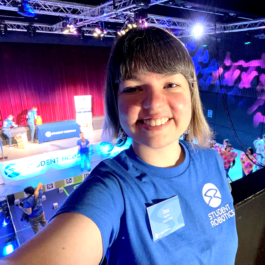
Name: Oana
Job Title: Software Engineer
From school to university
At school, my favourite subjects were Art and Computer Science, as I loved thinking outside the box and coming up with novel ideas. Getting accepted onto the Arkwright Scholarship Scheme introduced engineering to me as the obvious career option, which would scratch my itch for both the creative and technical.
I wanted to dive deeper into the Computer Science I had learned at school, and Electronics proved to be perfect, as it allowed me to learn about both hardware and software, and everything in between. I found my calling at the University of Southampton, where the entire spectrum was freely available to me within the School of Electronics and Computer Science. I studied MEng Electronic Engineering with Industrial Studies, and which showed me how Electronics is shaping the future through innovation and offering infinite opportunities at university and beyond.
Why I chose Siemens EDA
I initially joined the company during my summer placement in 2019, when it was still known as UltraSoC. A start-up, especially with a blend of hardware and software, seemed the perfect place to learn what makes companies work, from the engineers, marketing, and even executives – I was amazed by the spectrum of industry players working with the company. When I first met the team during my interview, I knew I’d made the right choice. They made me feel welcome, and I was already laughing with them while learning so much!
My placement was so valuable that I transferred courses, just so that I could undertake a 12-month placement with UltraSoC the following summer. During this second placement, the start-up was acquired by Siemens. This was incredibly exciting as it gave me a unique opportunity to continue experiencing the start-up culture I knew I loved, while also expanding my understanding of the industry as part of one of its biggest players.
My experience at Siemens EDA
Throughout my two placements, I was able to experience working within the Field Applications Team, the Embedded Software Team, and briefly within the Hardware Team. No matter which team I was working with, I always had the opportunity to interact with other teams and get involved with larger parts of the company and beyond. My placements have been fantastic, and all the teams made me feel truly valued and like I belonged!
Within the Embedded Software team, I worked on Embedded SDK (ESDK), a Software Development Kit which allows Tessent’s hardware modules to be configured and used from within an SoC. It was especially exciting to work on ESDK because it was still in pre-release at the start of my placement, so the code I wrote to fulfil one of ESDK’s initial design requirements made it to the very first customer release of ESDK! I learned almost everything I know about C programming, embedded systems, and how to work as part of team pioneering a large CI/CD project, from ‘learning by doing’ on ESDK. In fact, I loved my time within the Embedded Software Team so much that I am now working on ESDK full-time!
Although I’m now ‘purely’ a Software Engineer, I’m still developing all my Electronics skills, from using C to write embedded software, to interacting with the Embedded Analytics hardware modules, to building and testing FPGA images.
Besides Electronics, my time at Siemens is teaching me that it’s the people who really make a company special: ‘company culture’ is far more than a buzzword here!
During my free time
I see strong connections between engineering and art, as both encourage out-of-the-box thinking. Whether through life drawing sessions, creating mixed media installations, composing pieces on the piano, or designing fonts, art makes me a better engineer by making me pay attention to details (invaluable for debugging!) and appreciate the sociocultural impact of my engineering work.
My love for STEM outreach began at university: I was President of Southampton’s branch of Student Hubs, and coordinated Southampton Hub’s ‘Invent Plus’ outreach programme, introducing hundreds of disadvantaged schoolchildren to engineering through practical workshops, to narrow the STEM gender gap. I continue to give back to my community through workshops and webinars as a University of Southampton Graduate Ambassador, and I help run Student Robotics’ annual competitions, in which schoolchildren create their own autonomous robots.
During weekends, I go back to the University of Southampton as part of its ‘Toastrack’ student and alumni society, learning a tonne of Mechanical Engineering while restoring a 1929 vintage Dennis charabanc.
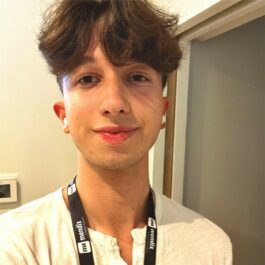
Name: Nick
Job Title: Hardware Design and Verification Engineer
From school to university
I have come a long way from the microchip-collecting 8-year-old trying to demystify the life force running so many devices around him – but the magic of what makes the electronics ‘tick’ has very much remained an enduring source of fascination for me. My first true milestone on this quest of ‘demystification’ was deciding to pursue a degree in MEng Electrical and Electronic Engineering at Imperial College London. Throughout school, I had been laying the foundations that I thought would best set me up for this – choosing advanced classes in Maths, Physics, Computing, and Chemistry. My academic journey throughout university followed a progressively more specialized study of electronics – concentrating in parallel on the two fields of hardware design/verification and machine learning. I felt that, between them – one being at the ‘highest’ level of technological abstraction and the other at the lowest – I had largely succeeded in ‘demystifying’ a lot of the magic of modern computing technology!
Why I chose Siemens EDA
Firstly, on the technical side of things, the work the team does naturally aligns very closely with my interest in hardware – specifically, the niche branch of Embedded Analytics is a very exciting opportunity to not just witness but to actually be a part of cutting-edge work in the silicon industry. Flexibility to do both design and verification as well as other miscellaneous engineering work makes for a holistically enriching technical experience. More than that, working at Siemens, more broadly, puts you in close proximity to a wealth of technological innovations in many fields; the feeling of being part of that community is very exciting, in and of itself. Aside from the technical aspects, however, I could tell from my very first interviews that I would enjoy working with the people on this team – something which I came to confirm, first-hand, not long after.
My experience at Siemens EDA
I first joined the Tessent Embedded Analytics team of Siemens as a UKESF scholar in 2021 – and since then have completed a summer internship, 6-month placement, and now a full-time graduate role. The work I’ve done has ranged from UVM-based verification of modules in the company IP catalogue to using Python to create internal helper tools – and even automating the product release flow process to customers, which was a multidimensional and very exciting project that required communication with other Siemens teams across the globe. From my time here, I can say the team culture is second to none. At every step of the way I’ve felt warmly welcomed, eagerly and patiently mentored, and generally included. There is no shortage of social opportunities, and the rapport is strong and close-knit – a welcome ‘artefact’ of the start-up beginnings of the team 🙂
During my free time
I have a range of interests outside of electronics. I’ve been an avid painter since I was young, having displayed artwork in exhibitions and art journals back home in Greece, and been an active member of the Imperial Art Club. I also have a strong interest in music production and vocals – which I got to pursue more seriously by taking a music technology class in my last year of university, where I got to write, produce, and record two songs. Besides art and music, I have also been playing tennis for many years now and enjoy going to the gym regularly. Lastly, having grown up in a multi-lingual environment, I’ve developed a keen interest in languages. Beyond English and my native Greek, I have taken French throughout school and university (although it also featured in my home environment growing up!), as well as Mandarin Chinese up to the HSK3 diploma and then Level 4, at Imperial.